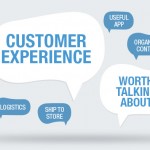
Author Archive
Hillary Ashton


Overheard in the Market-Argyle CMO Leadership Forum
- If you can’t get your marketing project up and running in 90 days, then it’s not a venture marketing project
- Create a marketing backlog – much like an agile developer’s backlog – to explore brand stories, epics, and themes
- Amplify everything with social
- Beta test commercials with YouTube
- Test and learn, test and learn

The New 4 A’s of Marketing: Analytics is the Glue
During my last post, I talked about the third new A of marketing, i.e., Appropriate. This week, I want to talk about a topic that’s near and dear to my heart: Analytic.
To recap, I believe the new four A’s of marketing is an approach that every marketer needs to adopt in order to overcome big-bang disruptions associated with new models, new technologies, and the new mindset of customers (see my previous posts on the New 4 A’s of Marketing).
In an article from HBR, entitled “The Ultimate Marketing Machine”, after ten thousand CMOs interviews, researchers discovered the following: 52% of high performing marketers leverage analytics for marketing effectiveness.
I can only assume they are also part of the 13% – that is, the 13% of marketers that are prepared to face big-bang disruption (see previous post). Perhaps unsurprising, Analytics is the quintessential glue that ties together the other A’s of new marketing.
Analytics is essential for Agility – how else can you make smart – indeed BETTER decisions?
It’s also critical for Accountability. In fact, analytics provide the very foundation for marketing attribution and measurement.
Appropriate (i.e., personalization and relevance) at scale is only possible with predictive analytics (propensity could be understood to be the likelihood for this message to be appropriate).
And yet, and YET Analytics seems hard. Scary. Expensive. Data-driven marketing is moving out of the back office into the boardroom. It is driving the best marketing – period. And it need not be expensive – start with specific business opportunities (or use analytics to identify where there is opportunity). Then plan, execute, measure and repeat.
At a recent Argyle conference, I had the opportunity to moderate a panel discussion on how data is aiding marketers navigate the omni-channel landscape. Many of the marketers in the room were talking about how much time they spend rehashing data. What was concerning is that a large contingent expressed lack of clarity regarding what is important (analysis paralysis). The successful CMOs and other marketing executives were pointing to a need to clearly define measurement objectives and subsequently, marketing metrics and arrive at a decision quickly. Being Analytic is not just discovering, but it is deciding and doing too.
To sum it up: Be Analytic. Be a Hero.
Related Solution: Transform your Customer Marketing with Manthan's Customer Analytics Solution

The New 4 A’s of Marketing: Personalization
Mass Marketing is So Over
Moving on to the third new A of marketing, namely, Appropriate. Last week we covered Accountability, including marketing measurement and attribution. After a couple of posts, you might get the feeling that I’m a Harvard Business Review junkie. I am. So multiple marketing offers for Martha Stewart Living magazine – do you think that would go over well? OK, back to Appropriate. In a previous post, I referenced an HBR article entitled ”Ultimate Marketing Machine”. This article invoked Share of Experience as the new Share of Wallet. This is very fitting, especially in a world where Chief Customer Experience Officers are proliferating. But what does this mean? How do you get Share of Experience? Being appropriate to your customer, segment, stage of purchase and channel are all critical pieces to solve the personalization puzzle. And unfortunately, these are moving pieces, which makes it a very complicated puzzle.Pizza and Personalization
Is the ‘next best offer’ sufficient for personalizing an experience? Probably not. As marketers, we may think of getting to the next revenue-generating conversion, but we need to acknowledge that customers view their interactions with a company as a complete brand experience. This extends beyond purchase and next best offer. But let’s not boil the ocean. Marketers, you need to take the first step: start by personalizing an OFFER (and we have a personalization engine that does that!). Once you have personalized messages and offers running smoothly, move towards personalization of the EXPERIENCE. This includes a determination of what is appropriate for this individual customer. Some days it MAY be an offer and some days it might not be, it might be a new service or as (eye glasses maker who just sent a bar voucher to someone having a bad day) just did it might be an act of kindness. It might be a new way to wear something a customer already purchased. Think Zappos and Tony Tsieh’s pizza story. Everyday, my inbox is full of “personalized offers” but some are very clear that the marketers behind a brand don’t really know me. Today (really today) I received an offer from Hilton to check-in online and pick out my room when I get to Seattle tomorrow (awesome! I like quiet rooms far from the elevator) and an offer from a salad company that I LOVE to go to an event they are hosting in a state far away from me (now I feel sad that I cannot go). Now, I’ll be ‘Captain Obvious’: Technology is technology. Without technology, doing personalized offers at any scale is hard (or impossible). Yet, good technology does not guarantee that you will be Appropriate. A clear understanding of your customer and her (or his) needs is essential to success. Be Appropriate. Be a Hero. Next post, I’ll review the fourth and final new A of marketing: Analytic.
The New 4 A’s of Marketing: A Call for Accountability
Hold yourself accountable before someone else does
During my last post, I covered the first new A of marketing, Agility. Today’s post will cover the notion of Accountability.
Traditionally, marketing has been viewed as a cost center, rather than a revenue generating machine. And when called to account for their budgets and performance, the traditional marketer may have shrugged their shoulders.
Marketers of the world, gone are the days of shrugging your shoulders, repeating the famous John Wanamaker quote and laughing it off like you don’t have a care in the world. For those of you unfamiliar with the quote: “Half the money I spend on advertising is wasted; the trouble is I don't know which half.”
No disrespect to John Wanamaker. He did, after all, hire the first full-time copywriter in history! However, an increase in marketing budgets requires an increase in responsibility. My dear old-school marketer: your days are numbered. It’s time to make the CFO your new BFF. According to Gartner, leaders in marketing are securing larger budgets. Much of this is for digital marketing, but much of this spend will be allocated on marketing technologies. Consequently, the need prove value is ever increasing.
All Paths Point to Attribution
The marketing hero has the opportunity to demonstrate Accountability by measuring and reporting on her progress. By showing conversions. By proving revenue uplift. By justifying Return on Marketing Investment (ROMI).
This is not an easy feat. Marketers have been discussing performance measurement, marketing metrics and attribution for years.
ROMI Means All Channels, Not One
New research from webmarketing123 and compiled by eMarketer blew me away: 38% of marketers do not leverage an attribution model. What?
Even more interesting: a majority of marketers that DO have an attribution model in place are only considering last touch, first touch, or first and last touch. The customer journey is not something that your average marketer has wrapped her arms (or head?) around today.
There may be a business or two out there that operate via a single channel. But I’m hard pressed to come up with one right now. So, marketers, if your customer is on a journey, multi-channel, omni-channel and digital, your measurement plan needs to be too. And you need to prove it works.
Cross-channel attribution is the best way to show your CFO that you are Accountable. That you know exactly the cost of customer acquisition (CAC). That you need X budget to achieve Y revenues. And then, impress him even more by exceeding those goals.
Be Accountable. Be a Hero.
Next time, I’ll cover the third A of new marketing: Appropriate.

The New 4 A’s of Marketing: A Focus on Agile Marketing
The 4 A’s of Marketing
During my last post, I mentioned the “big-bang disruption” coming down the pipe for marketers. I also promised to share with you the four A’s of marketing to create marketing heroes. In my mind, the four A’s will elevate the marketer to the upper echelon of high-performance marketers (the 13%) that can take action to address disruptions and achieving measurable results (For more information on the 13%, please reference McKinsey and ANA’s recent report on Marketing 2020).Agile Marketing
The first new A of marketing is AGILITY. Disruption is here to stay, so you better get comfortable. Marketers can make disruption work by architecting teams for agility. Strict organizational structures are so “last year”. Need someone to figure out Instagram? Get that new kid in finance to help out. To get agile, HBR discusses the Ultimate Marketing Machine and the notion of SWAT teams. Marketers, you should create a culture of SWAT teams to help with mission-critical customer needs. Surround yourself with agile players – hold your team accountable to CHANGE. Any team member that relies on the age-old “we’ve always done it this way” should probably get re-trained or hit the road. Marketers, you can experiment (and measure) with your own team. For instance, what percent of your time or your team’s time is set aside in a week a day or a month to experiment? Is your schedule just what is in your Outlook calendar or do you actually plan fluid sessions for creative knowledge share and attempting something new? If it’s the former, it’s time to prioritize Agility. Finally, it’s time to commit to anticipating and planning for future disruptions. For instance, take a moment to contemplate what 3D printing will do to your business? What about your marketing tactics? A consultant I recently met with was talking about 3D printing everything you need (food, do it yourself items, and clothes). After my mind melted, I started to wonder how the mass adoption of 3D printing would impact my world. I wouldn’t have to order tickets for my next trade show. Better yet, I could get my kids a Lego blueprint for the holidays next year. I can go on and on about Agile Marketing. But the first step to Agility is seeing the disruption. Make sure you set aside some time to look out at the horizon. Be Agile. Be a Hero. Next time, I’ll cover the second A of new marketing: Accountability.
